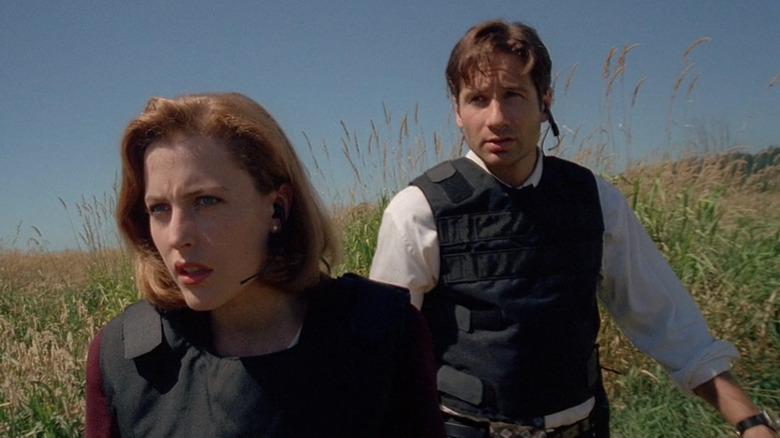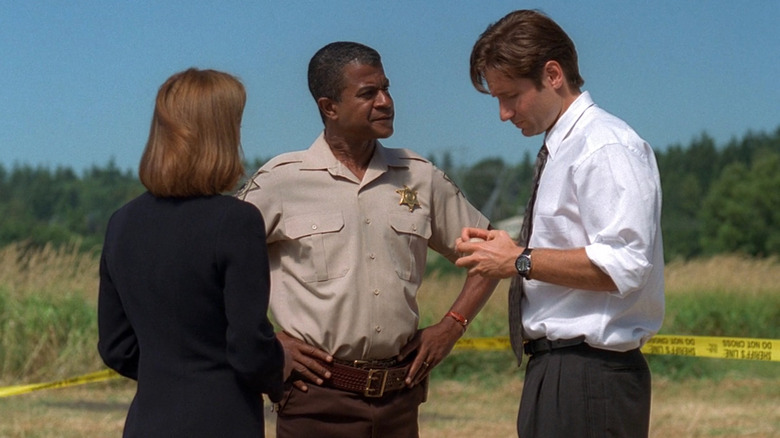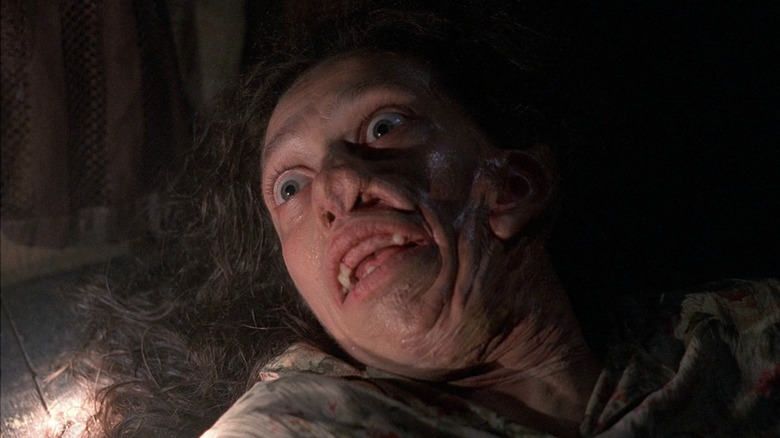
In its most infamous monster-of-the-week episode, "Home," Fox's "The X-Files" took the idea of small-town American isolationism to the furthest extreme network TV would allow. First broadcast in October 1996 — two months before the TV Parental Guidelines system went into effect — "Home" juxtaposes Norman Rockwell images with hidden horrors that could be triggering even now for some viewers. In the span of one hour (44 minutes, minus commercials), the episode toggles between blue skies, baseball, a cornfield and Cadillac, '50s pop, references to "The Andy Griffith Show," and much uglier subject matter like infanticide, birth defects, home invasion, violence against Black people, and an incestuous mutant family.
To say it delved into taboos would be an understatement. This wouldn't be your average rerun: Fox withheld airing "Home" again for a full three years until October 1999, by which time the episode would be carrying the show's first and last TV-MA rating. "Only on Halloween … would we dare air an episode so controversial," read the accompanying TV Guide ad, reprinted in 2015 by The New York Times.
Writers Glen Morgan and James Wong told the Times that "Home" took its title, first and foremost, from their own homecoming to "The X-Files." The duo had been with the show from the beginning. They were the first writers to pen an episode after series creator Chris Carter, and would go on to pen 10 more episodes before departing.
"Home" brought Morgan and Wong back into the fold, and they reasserted themselves by pushing the envelope. The episode opens with a squishy birthing scene where a trio of genetic monstrosities deliver the baby, then bury it alive in the rain.
"The people who responded first were the executives," Wong said. "I remember getting a call from a producer. He goes, 'You guys are sick!'"
'Something Rotten In Mayberry'

The next two sections contain spoilers for "Home."
"Home" remains positively Lynchian in the way it exposes the American dream's dark underside. Generations of inbreeding have left the Peacock family subhuman, rotting their brains the way any modern political echo chamber might do. Maybe this is why they bury the run of their litter in a neighboring sandlot where kids gather to play pick-up baseball. Blood comes bubbling up from the ground like oil, right under home plate.
The setting is the town of Home, Pennsylvania, which FBI agents Fox Mulder (David Duchovny) and Dana Scully (Gillian Anderson) liken to Mayberry from "The Andy Griffith Show." Home even has a same-named version of the "sheriff without a gun," Andy Taylor, though he's played by Tucker Smallwood, and technically he does have a service weapon that he keeps in a lock box at home.
This is a town where people do lock up their guns but don't lock their doors, though they should maybe do the opposite of both. Faced with a murdered newborn on his watch, Sheriff Taylor stands arms akimbo, musing:
"I've seen and heard some of the sick and horrible things that go on outside my Home. At the same time, I knew we couldn't stay hidden forever… that one day, the modern world would find us and my hometown would change forever."
The backward Peacocks and horrifying modern world not only find Sheriff Taylor in his home; they beat him and his wife to death with clubs like cavemen, to the tune of "Wonderful! Wonderful!" (sung by a Johnny Mathis soundalike since the real Mathis disapproved). "We were starting to get a little concerned," Glen Morgan told the NYT, "so I brought in our broadcast standards and practices executive when we edited [that] scene."
The Peacocks Could Have Returned On Millennium

Sheriff Taylor's deputy — named Barney, naturally — fares no better than him as he advances on the Peacock house. Built during the Civil War (or "War of Northern Aggression," as Mrs. Peacock calls it, despite residing in the North), it's a place frozen in time, where loose newspapers trumpet old headlines of Elvis Presley's death.
Directed by Kim Manners, "Home" ends with the armless, legless, insensate Mrs. Peacock disappearing from her hiding place under the bed, where monsters and mothers dwell. She talks of starting a new family with her surviving son, who also fathered her other two boys. "You can't keep a Peacock down. There'll be more."
Alas, there wouldn't be more "X-Files" episodes keeping up with the Peacocks, though a return for the characters is something Morgan and Wong considered writing. Ultimately, Morgan explained, it was another call from Fox that killed that idea:
"The next year Jim [Wong] and I ran the show 'Millennium,' which Chris Carter also created, and the ratings were low on that show and we thought, 'Hey, what if Lance Henriksen finds the surviving members of the Peacock family?' Everybody thought that was a great idea. And we were all set to do a sequel to 'Home' and then we got a call from Fox that was: 'Those characters never appear on television again.' So we dumped it."
"Home" is so wrong yet so right on so many levels. While a proper sequel never materialized, the episode, much like the Peacocks' "big American car," left some impressive tire tracks in the "X-Files" yard. This was an hour of television that expanded the boundaries of who or what could be fridged. Syndication would bring "Home" back on Fox's sister cable network, FX, and currently it's streaming on Hulu.
Read this next: The 15 Best Horror TV Shows Of All Time
The post The X-Files' 'Home' Episode Was So Dark, A Fox Executive Phoned The Writers appeared first on /Film.
